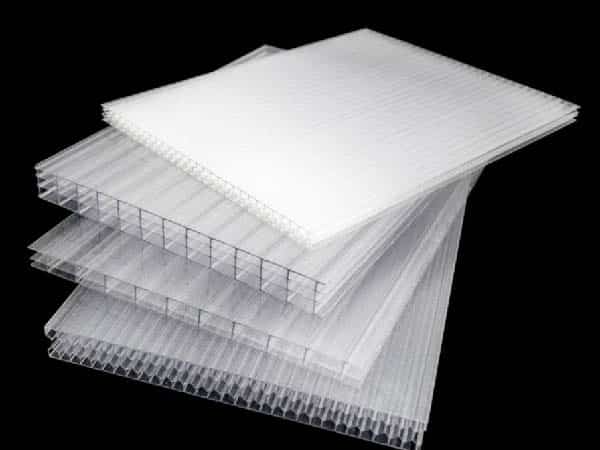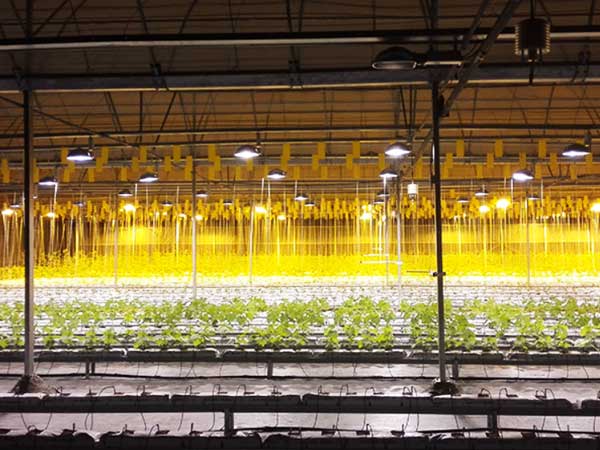In global agricultural development, choosing the right irrigation system is crucial for the success of commercial greenhouses. This is especially true in regions with water scarcity and extreme drought conditions, such as the Middle East and Africa. In these areas, efficient irrigation systems optimize water use, reduce waste, and ensure crop quality.
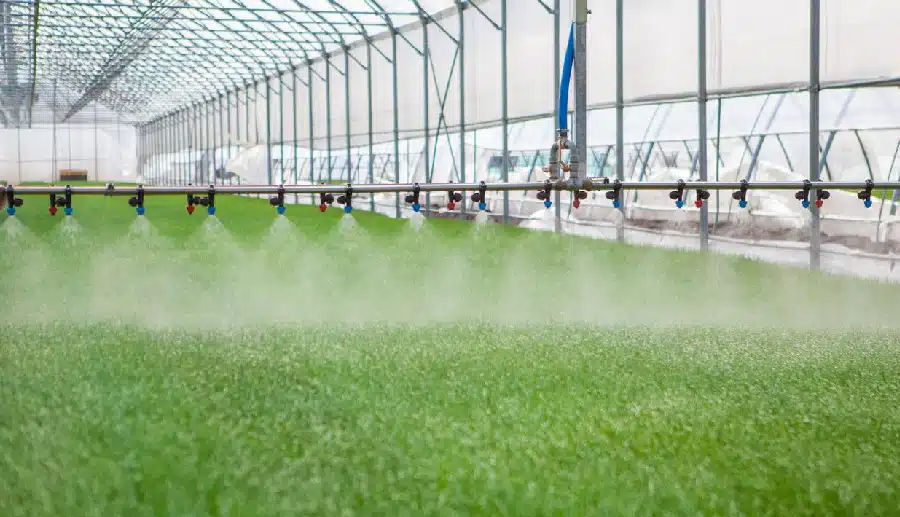
So, what irrigation systems are commonly used in commercial greenhouses? This article explores six popular commercial greenhouse irrigation systems. These systems are vital in ecological balance and sustainable agricultural development, particularly in water-stressed areas like the Middle East and Africa.
You May Like: INSONGREEN Greenhouse Irrigation System >>
Manual Control Pipe Irrigation System
First, let’s look at the manual control pipe irrigation system. Its core strengths lie in its flexibility and efficiency. By manually controlling valves it allows precise control over irrigation areas and quantities. To be cost-effective, a single hose can easily move between multiple valves, reducing the need for additional equipment. Hoses are made from various materials like polyethylene (PE), polyvinyl chloride (PVC), rubber, and coated hoses, all known for their durability and flexibility.
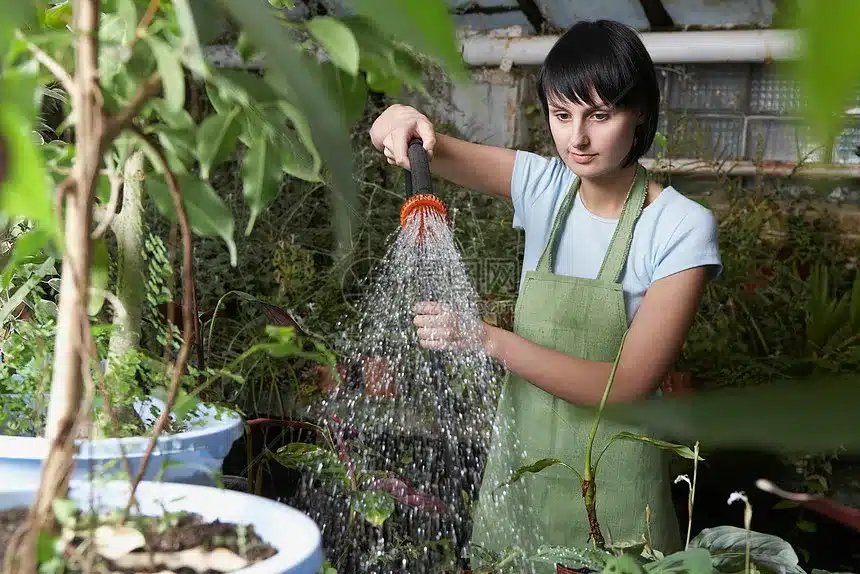
The system can be equipped with sprinklers or water guns to improve irrigation efficiency and meet diverse crop needs. This feature enables the system to irrigate standard crops and meet the specific needs of special crops or growth stages.
One significant advantage of the pipeline irrigation system is its strong adaptability and simple operation. Its installation and maintenance are relatively straightforward, making management more convenient. Due to its simple design, the system rarely clogs and requires only basic purification and filtration measures for various water qualities, significantly reducing the dependence on complex equipment.
Moreover, the pipeline irrigation system demands a lower initial investment, making it an ideal choice for small to medium-sized greenhouses. It’s generally recommended to plan for a water supply of no less than 25 cubic meters per hour per hectare of cultivation area to ensure adequate irrigation coverage and water supply for crop growth.
Drip Irrigation System
Following the pipeline irrigation system, let’s discuss another popular method in commercial greenhouses – the drip irrigation system. Drip irrigation delivers water directly to the roots of plants in a drip or trickle manner, making it an extremely efficient irrigation method. Typically, the system can be laid on the greenhouse surface, or the drippers or drip lines can be buried about 30 centimeters underground. Such an arrangement helps minimize evaporation losses and directly supplies water to the root system.
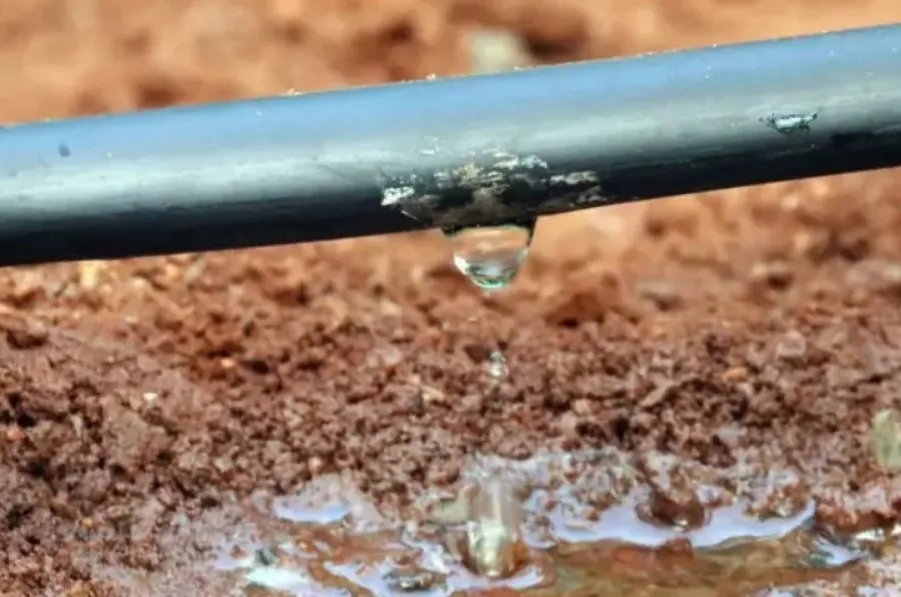
The drip irrigation system is particularly useful in colder seasons as it avoids high humidity in greenhouses caused by irrigation, thereby reducing the risk of crop diseases. Its water and labor-saving features, along with energy efficiency, improved crop quality and yield, wide adaptability, and easy automation, make it an indispensable part of modern agriculture. Additionally, the drip irrigation system can be combined with fertilization equipment for precise fertigation or pesticide application, further enhancing crop growth efficiency and quality.
However, the initial investment for a drip irrigation system is relatively high and demands high water quality. The system’s tiny drippers or tubes are prone to clogging. Therefore, when choosing a drip irrigation system, it is essential to equip it with adequate purification and filtration equipment based on local water quality and maintain it regularly for continuous efficient operation. In practice, drip irrigation is often combined with micro-sprinkler or pipeline irrigation systems to adapt to different environmental conditions and crop needs, especially in areas with significant seasonal changes. This combination allows for more effective water management, ensuring a balanced crop water supply under various climatic conditions.
Micro-sprinkler Irrigation System
Unlike the drip irrigation system that directly waters the root area, the micro-sprinkler irrigation system uses a spray method suitable for a wider range of crops, especially those requiring foliar moisture.
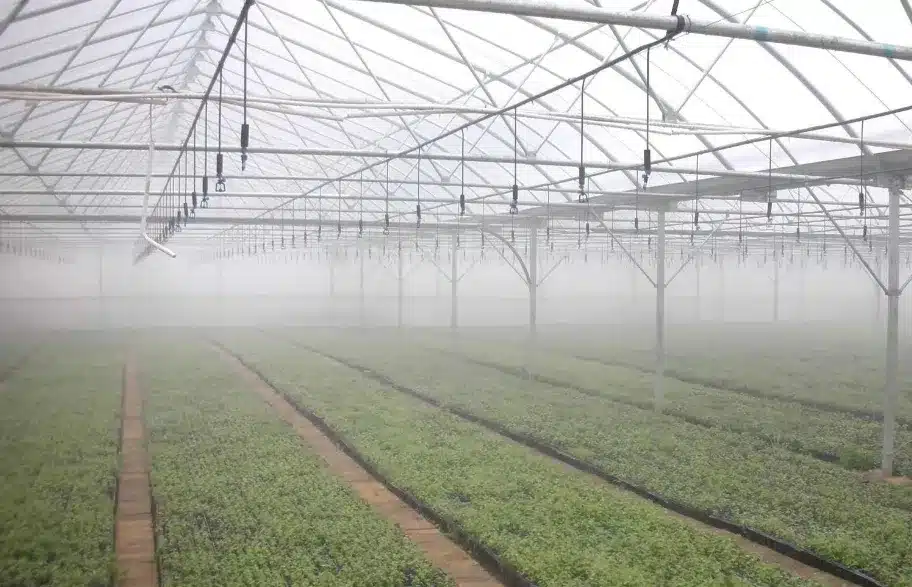
The micro-sprinkler system typically comprises various micro-sprinklers, micro-spray tapes, and spray guns. These devices produce fine droplets that evenly cover the entire plant, providing gentle and uniform irrigation. In greenhouses, to maximize irrigation efficiency and minimize interference with other field operations, micro-sprinklers are often suspended upside down from the greenhouse structure. This arrangement not only ensures uniform irrigation but also helps improve air circulation and humidity control inside the greenhouse.
A key advantage of the micro-sprinkler system is its flexibility. Unlike the drip system that focuses on specific areas, micro-sprinklers can cover a broader area, suitable for crops with diverse needs. The micro-sprinkler system is particularly effective in hot seasons as it provides irrigation, helps lower temperatures, and increases humidity in greenhouses, creating a more suitable crop growth environment.
However, compared to the drip system, the micro-sprinkler system requires more frequent maintenance to ensure clean and unclogged nozzles. While it may be more complex in design and installation, the micro-sprinkler system’s flexibility and environmental regulation capabilities make it a preferred irrigation method for many commercial greenhouses.
Micro-Sprinkler Tape Irrigation System
Like the micro-sprinkler system in flexibility and adaptability, the micro-sprinkler tape irrigation system innovates its irrigation technology, making it more efficient in certain situations.
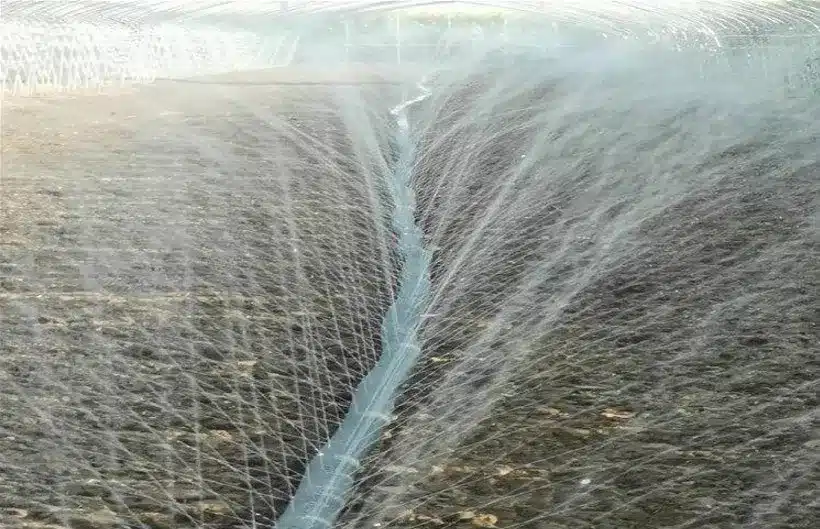
The core of this system is the micro-spray tape, a specially designed thin-walled plastic hose with tiny water outlets. These outlets allow the micro-spray tape to function both as traditional drip irrigation and micro-spraying. This dual functionality provides greater irrigation flexibility, allowing the system to adjust according to various crop needs and climatic conditions.
In greenhouses, micro-spray tapes are usually covered under plastic film during colder seasons. This setup utilizes the film’s refractive effect, creating a drip-like watering effect for more precise moisture delivery. In hotter seasons, removing the film allows the tapes to create a fine spray effect, helping to lower temperatures and increase humidity in the greenhouse. This versatile application makes the micro-spray tape system an economical and practical choice, especially suitable for plastic tunnels and solar greenhouses with less stringent irrigation requirements.
Subsurface Drip Irrigation System
The subsurface drip Irrigation system differs significantly from the previously mentioned methods. Its core comprises underground seepage pipes with tiny pores, uniformly permeating water into the surrounding soil. When the water in the pipes is pressurized, it seeps through these micro-pores, directly moistening the soil rather than the plant surface.
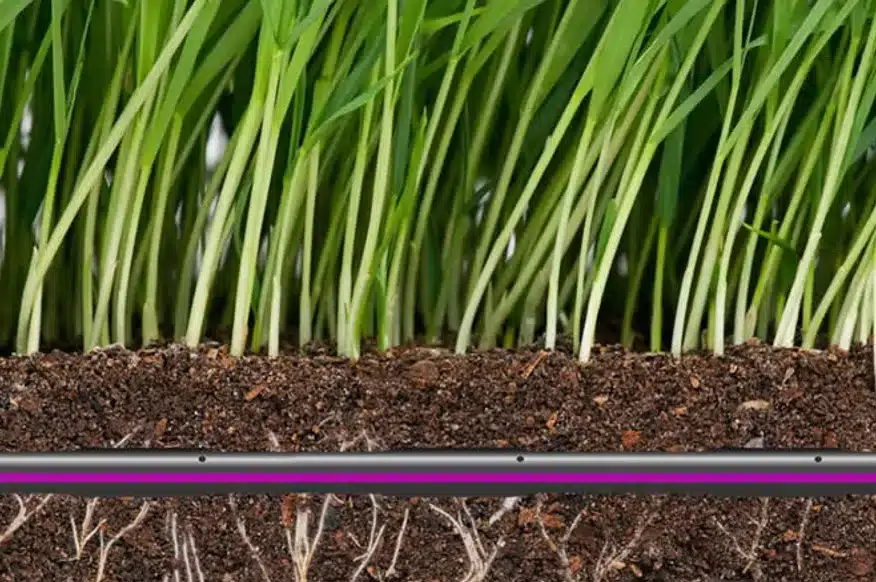
The advantages of this method include:
- Efficient Water Use: As water is applied directly to the soil and not to leaves or the air, subsurface drip Irrigation reduces evaporation losses, making water usage extremely efficient and particularly crucial in water-scarce regions.
- Root Health Promotion: Direct root watering ensures even moisture absorption, fostering balanced and healthy root development, thereby enhancing overall plant health and growth quality.
- Disease Risk Reduction: Since water does not directly contact plant leaves and flowers, subsurface drip Irrigation lowers the risk of fungal and bacterial diseases caused by excessive moisture for some crops.
- Fertilizer and Pesticide Savings: When fertilizers are introduced into a subsurface drip Irrigation system, precise control over water and nutrient supply also reduces the waste of fertilizers and pesticides.
Despite higher initial installation costs and the need for regular maintenance to prevent pipe clogging, subsurface drip Irrigation is increasingly popular in commercial greenhouses due to its long-term water-saving benefits and positive impact on crop growth.
Mobile Overhead Sprinkler System
Modern greenhouses also utilize an efficient and flexible irrigation system called the mobile overhead sprinkler system. Combining mobility and high irrigation uniformity, it offers an effective and flexible solution for crops within greenhouses.
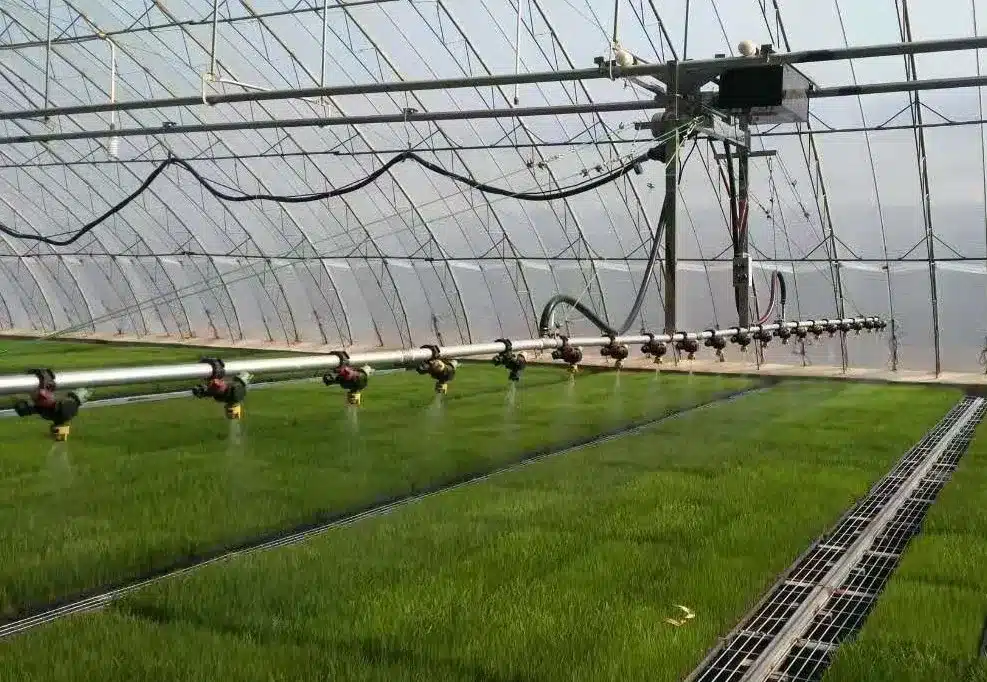
Installed on rails suspended from the greenhouse structure, the mobile overhead sprinkler system moves back and forth, covering a wider area and ensuring uniform irrigation. It irrigates through micro-sprinklers on either side, precisely controlling the flow to ensure even water distribution to crops.
Additionally, the mobile overhead sprinkler often includes fertilizing and medicating equipment, allowing it not only to irrigate but also to fertilize or spray simultaneously, greatly improving agricultural operation efficiency and accuracy. This integrated design means farmers can complete multiple agricultural tasks in one operation, saving time and labor.
To adapt to different crops and spraying needs, the micro-sprinklers on the mobile overhead sprinkler are interchangeable. This flexibility allows farmers to choose the most suitable nozzles for specific crop requirements or specific spraying tasks. The sprinklers are equipped with anti-drip devices, helping prevent unnecessary impact on crops or soil after spraying.
Frequently Asked Questions
Q1: Which irrigation system is recommended for greenhouses in arid regions like the Middle East and Africa?
In arid regions like the Middle East and Africa, choosing a water-saving and efficient irrigation system for greenhouses is crucial. The drip irrigation system, with its water-saving and precise irrigation features, is highly suitable for these areas, directly providing moisture to crop roots and reducing evaporation. The subsurface drip Irrigation system is also a good choice, especially for crops requiring continuous soil moisture, as it maximizes water conservation. Additionally, the micro-sprinkler system is very effective in hot seasons when reducing greenhouse temperatures is needed.
Q2: Cost-effectiveness comparison of different irrigation systems
The cost of different irrigation systems varies depending on their complexity and coverage area. Generally, pipeline irrigation systems are less expensive and suitable for small to medium-sized greenhouses with limited budgets. Although drip irrigation systems have a higher initial investment, they can save water resources and operational costs in the long run due to their efficient water usage. Subsurface drip irrigation systems and mobile overhead sprinklers usually have higher initial installation costs, but they offer high efficiency and automation, suitable for large, modernized greenhouses.
Q3: Common irrigation systems in large modern greenhouses
In large modern greenhouses, mobile overhead sprinklers are popular due to their efficiency, automation, and flexibility. These systems can cover large areas and have fertilizing and spraying capabilities. Drip irrigation is also widely used in large greenhouses, especially for high-value crops that require precise moisture management. Additionally, automated micro-sprinkler systems are becoming increasingly popular, particularly in situations where regulating the greenhouse’s climate is necessary. These systems offer flexible irrigation solutions and can be integrated into the greenhouse’s smart management system for highly automated operations.
Q4: Guide to Greenhouse Plants’ Leaf Water Contact Needs
For plants where it’s preferable to avoid direct water contact on leaves, common examples include tomatoes, peppers, grapes, and roses. These plants’ leaves or fruits, if kept moist for extended periods, may increase the risk of fungal diseases such as late blight or botrytis. For these plants, drip or subsurface drip Irrigation systems are more suitable, as they deliver water directly to the roots, minimizing leaf wetness.
Conversely, some plants benefit from foliar moisture, including many lawn plants, certain ornamental foliage plants (like pothos), and some greenhouse flowers (such as African violets). These plants thrive with leaf spraying that simulates natural rainfall, enhancing their growing conditions and overall health. For such plants, micro-sprinkler systems or mobile overhead sprinklers are better choices, as they provide uniform leaf wetness, mimicking a natural rain environment.
Conclusion
In the context of today’s global agricultural development, selecting the appropriate greenhouse irrigation system is crucial for ensuring crop quality and enhancing water resource efficiency. Whether facing challenges of drought and water scarcity or pursuing ecological balance and sustainable agriculture, these irrigation systems are indispensable components of modern greenhouses. From pipeline irrigation to mobile overhead sprinklers, each system has its unique advantages, suited to different environments and crop needs. Therefore, understanding these systems’ characteristics and choosing accordingly is key to achieving efficient and sustainable greenhouse cultivation.
